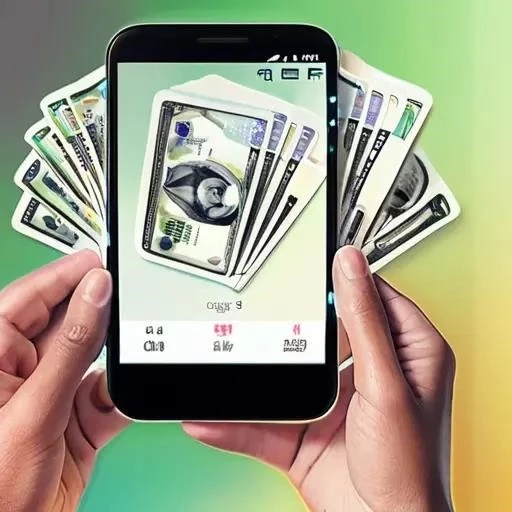The digital revolution has profoundly reshaped our financial landscape, transforming how we transact, save, and even perceive money itself. For years, the convenience of e-money – those ubiquitous digital wallets and payment cards – has been celebrated for seamless, cashless transactions, from toll roads to daily commutes. Yet, a persistent question has lingered in the minds of many users navigating this evolving ecosystem: can e-money truly offer the flexibility of traditional cash? The answer, increasingly, is a resounding yes, signaling a pivotal shift in the utility of digital funds across Indonesia and beyond.
Once primarily designed for non-cash interactions, e-money platforms are now ingeniously bridging the gap between digital convenience and physical liquidity. This remarkable evolution is not merely a technical upgrade; it represents a significant step towards greater financial inclusion, empowering millions with unprecedented control over their digital assets. By integrating innovative withdrawal options, leading financial institutions are democratizing access to funds, ensuring that the power of your digital wallet extends far beyond mere tap-and-pay functionalities, offering tangible cash when and where you need it most.
| Category | Details |
|---|---|
| Concept & Purpose | Digital representation of cash stored on a card or mobile device, primarily for non-cash transactions like tolls, public transport, and retail purchases. Aims to reduce reliance on physical currency. |
| Key Features | Contactless payment, quick transactions, reloadable balance, often linked to bank accounts or other digital wallets. Increasingly includes cash-out capabilities. |
| Major Providers (Indonesia Examples) | Mandiri e-money, Simas E-Money (Bank Sinarmas), BRIZZI (BRI), TapCash (BNI), Flazz (BCA), GoPay, OVO, DANA, ShopeePay. |
| Evolution & Future | Moving beyond purely non-cash, embracing interoperability and offering more versatile cash-out options to enhance user convenience and financial inclusion. |
| Official Reference | Bank Mandiri e-money Official Website |
Unlocking Liquidity: Diverse Pathways to Cash
The journey from digital balance to physical currency is no longer a mythical quest but a tangible reality, thanks to the concerted efforts of financial innovators. For users of platforms like Simas E-Money, the process is remarkably straightforward: simply navigate to the “Tarik Tunai” (Cash Withdrawal) menu within the SimobiPlus application, select your desired amount, and proceed with the transaction at designated ATMs or partner merchants like Alfamart. This streamlined approach, leveraging existing infrastructure, significantly enhances accessibility, transforming every corner store into a potential cash point.
Mandiri e-money users also benefit from a suite of convenient cash-out options, reflecting the industry’s commitment to user-centric design. While traditionally a non-cash payment card, Mandiri has ingeniously integrated features allowing users to withdraw funds directly from Mandiri ATMs, often without needing a physical card, using generated tokens or QR codes. Furthermore, the ecosystem’s expanding interoperability means that e-money balances can frequently be transferred to other popular digital wallets such as DANA or ShopeePay, or even directly to personal bank accounts, effectively converting digital value into spendable cash for a myriad of purposes.
Beyond Cards: The Rise of Digital Wallet Conversions
The evolution of e-money extends beyond proprietary cards, encompassing a broader spectrum of digital wallets that offer even greater flexibility. While the primary function of these wallets remains non-cash transactions, the ability to “cash out” has become a crucial differentiator, catering to a diverse user base. For instance, several platforms facilitate transfers from e-money balances to popular digital wallets like DANA or ShopeePay. Once funds reside in these versatile platforms, users gain access to their respective cash-out mechanisms, which often include withdrawals at ATMs, transfers to bank accounts, or even direct payments for goods and services where physical cash might still be preferred.
This multi-pronged approach underscores a strategic shift: rather than forcing users into a purely cashless paradigm, financial institutions are embracing a hybrid model that respects the enduring utility of physical currency. By providing robust pathways for digital-to-physical conversion, they are not only enhancing user convenience but also fostering greater trust in the digital economy. This flexibility is particularly vital in emerging markets, where a significant portion of the population still relies on cash for daily transactions, and where digital literacy is steadily growing, making the transition smoother and more inclusive.
A Future Forged in Flexibility and Inclusion
The ability to convert e-money into cash is more than just a feature; it’s a testament to the dynamic adaptability of modern finance. Industry experts widely predict that this trend will only intensify, driven by consumer demand for seamless financial experiences and regulatory pushes for greater interoperability; The Bangko Sentral ng Pilipinas, for example, has already imposed capital and liquidity requirements on electronic money issuers, aiming to foster a safe, efficient, and inclusive digital finance ecosystem. Such regulations, while ensuring stability, also pave the way for more integrated and user-friendly services.
Looking ahead, we can anticipate even more innovative solutions, potentially including direct withdrawals from a wider network of ATMs, enhanced partnerships with retail outlets, and even peer-to-peer cash-out options. This ongoing evolution positions e-money not just as a convenient payment method, but as a truly versatile financial instrument, capable of meeting diverse user needs across the spectrum of digital and physical economies. The future of finance, undoubtedly, is one where your digital wallet is not just a portal to cashless payments, but a powerful key to unlocking liquidity, ensuring financial freedom for all.

